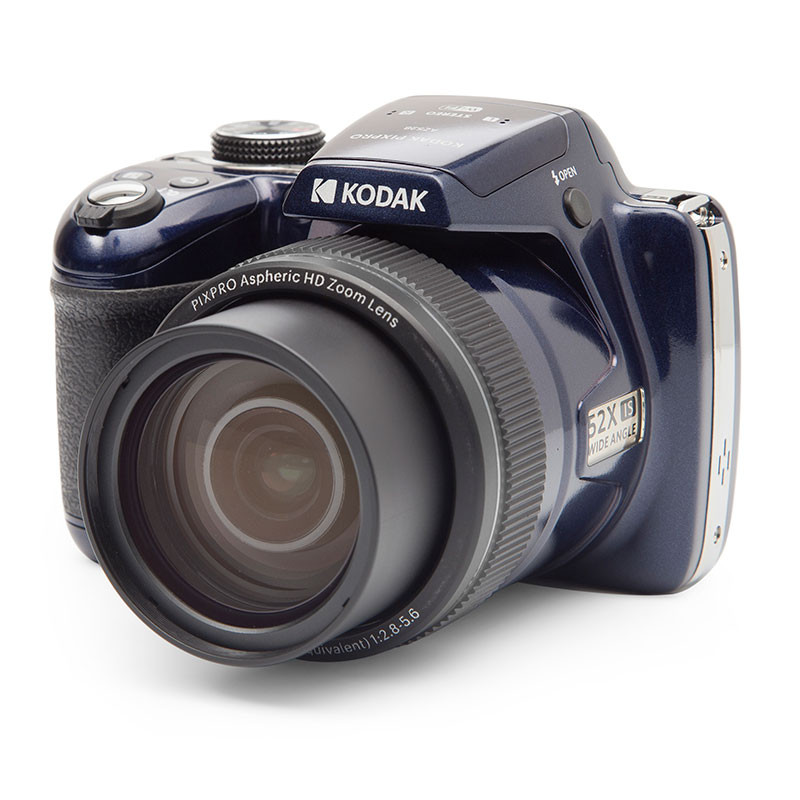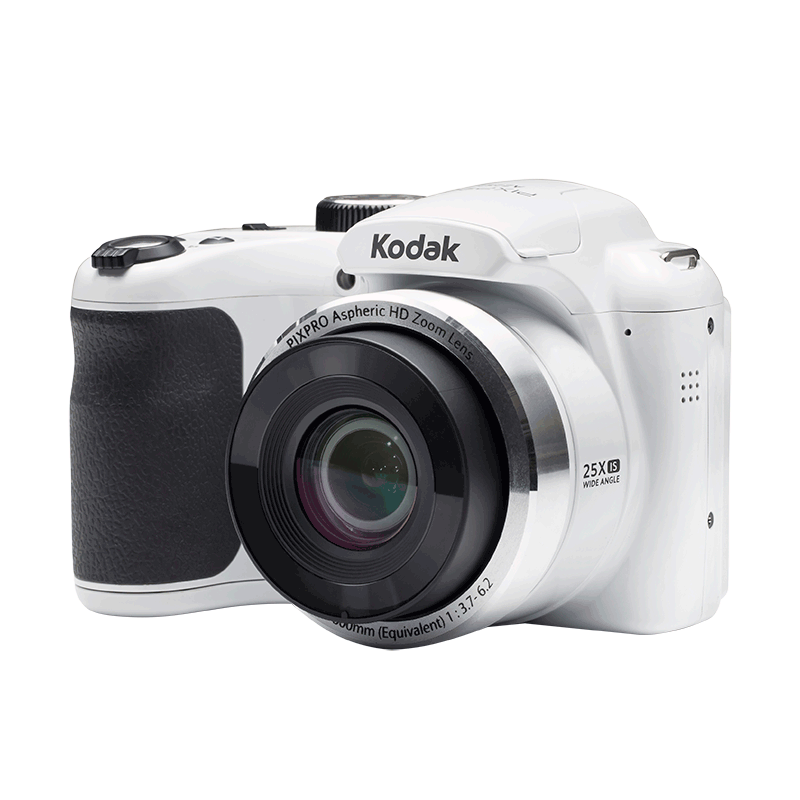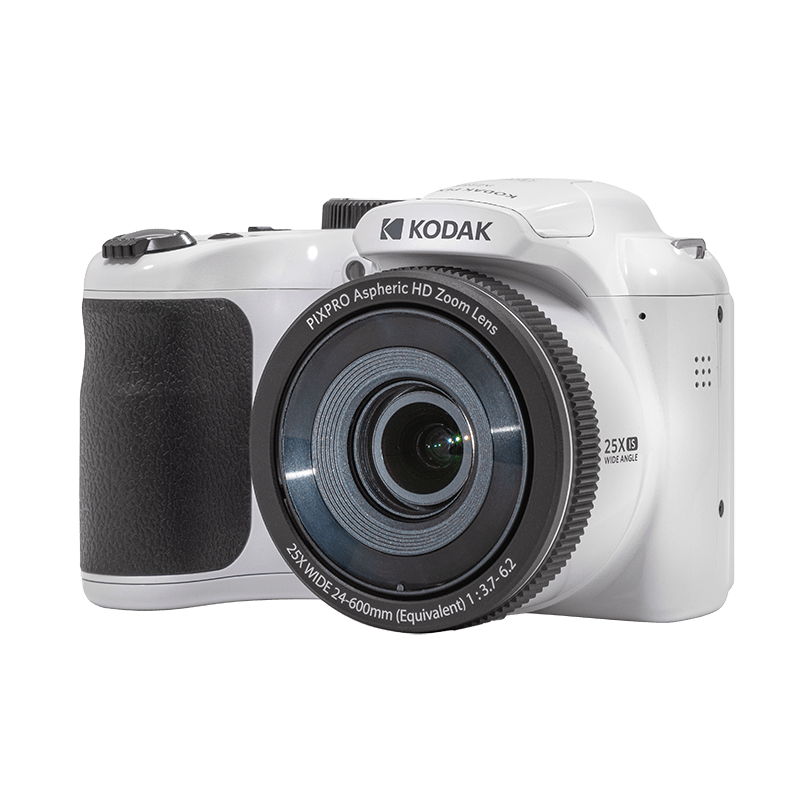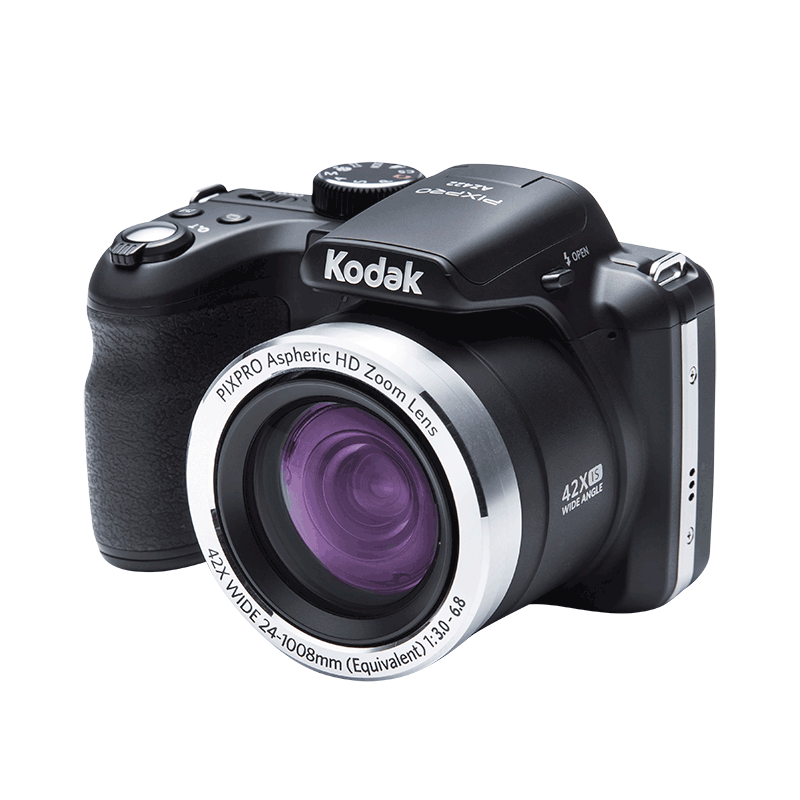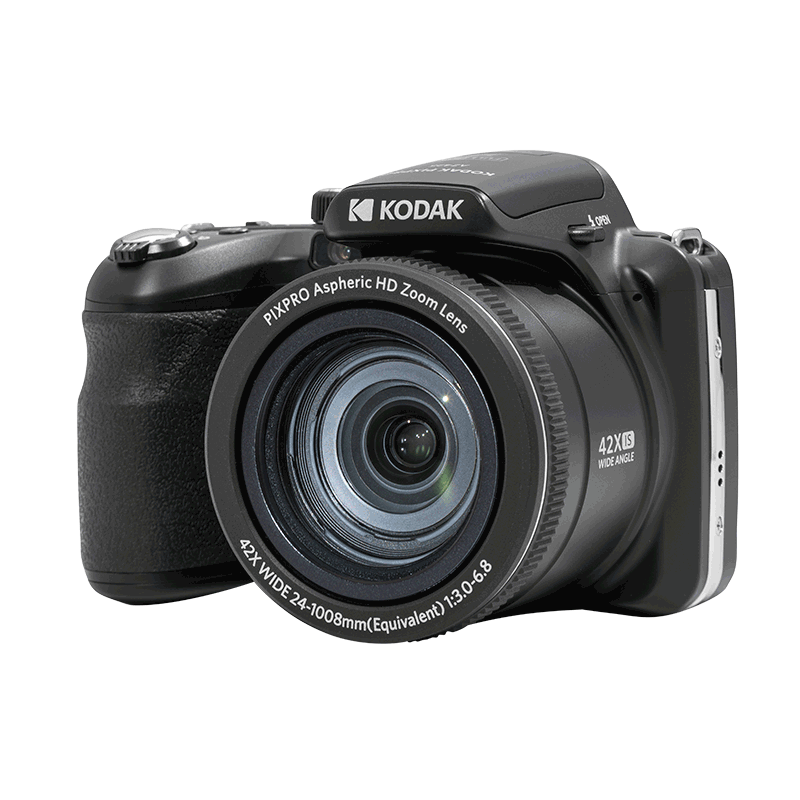
A bridge or SLR camera: which should you choose?
Are you passionate about photography but unsure whether to buy an SLR or bridge camera? Choosing the right tool is essential for snapping your dream shots. Image quality, portability, versatility and precision: which camera is best suited to your needs? Kodak provides the features of both SLR and bridge cameras to help you make the right decision.
Bridge or SLR cameras: what's the difference?
Both are bigger and more powerful than compact cameras, yet bridges and SLRs offer different levels of precision and versatility. Knowing the differences between these two cameras is essential if you want to make the right choice to suit your photography needs.
SLR properties
The SLR is a fairly bulky camera with a robust design. Its optical and mechanical design is highly unusual: the camera uses a mirror to reflect light from the lens onto an optical viewfinder. This allows the photographer to see exactly what the lens is capturing. This technology guarantees an extremely precise shot composition.
A DSLR (digital single-lens reflex) camera generally boasts a large sensor for superior image quality, even in low light. Interchangeable lenses are another major feature, offering unrivalled flexibility for different types of photography: portraits, landscapes, macro and so on.
SLR cameras are extremely customisable and adaptable. They do, however, require a certain amount of photographic expertise to make the various adjustments and choose the right lenses, etc. Professionals therefore prefer them.
Bridge properties
As their name suggests, bridge cameras act as a 'bridge' between compact and SLR cameras. They offer an excellent compromise between ease of use and performance. Unlike SLRs, they have fixed, non-interchangeable lenses that are extremely versatile. They generally have fairly powerful zooms.
The bridge is so versatile that you can cover a wide range of situations and scenes without changing lenses. This camera is more compact and lighter than an SLR; it is easy to carry and use on the move without taking up too much space.
Although they don't always match the image quality of SLRs, today's bridges boast respectably-sized sensors, effective image stabilisation and a variety of automatic and manual shooting modes. They are therefore an excellent option for those looking for a practical all-in-one camera.
What criteria should you use to choose a camera?
The best way to choose between an SLR and a bridge camera is to know what criteria to take into account. These include portability, versatility and price.
The practicality of the camera
The bridge, an alternative to a compact or SLR camera, is much less imposing than the latter. Therefore, it's still portable and easy to carry around, in addition to being versatile: it's ready to use for various types of shots. DSLRs, on the other hand, take up more space, mainly due to the various lenses with which they can be fitted. You’ll more than likely need to bring all the lenses with you, so that you are ready to take all types of photographs.
The bridge is therefore ideal for people looking for versatility and a lot of flexibility. It can be used to photograph a wide range of situations, making it ideal for nature or city outings, hikes, holidays and so on. SLRs, on the other hand, are more bulky and require a backpack to store the various lenses.
The desired image quality
The first thing to understand is that image quality is not just about resolution, although that's a good place to start. The zoom, lens and viewfinder are also important. SLR lenses are interchangeable and of better quality, but bridge lenses are more versatile. The latter's zoom capabilities are impressive, but remain inferior to that of the SLR. The viewfinder is found on the screen on the back of bridge cameras, and directly on the lens of SLRs. The bridge is therefore more practical, whilst the SLR is more precise.
Therefore, those who wish to prioritise impeccable quality, like professionals, will opt for an SLR. But if you're looking for versatility and ease of use above all else, a bridge camera is the way to go. The latter still offers a good quality, which is generally sufficient for most photography enthusiasts.
Level of photography expertise
If you’re looking to purchase a bridge or SLR, it's because you want to achieve more than a compact camera has to offer. However, your photography expertise plays a role in knowing which camera to buy.
The DSLR is the ideal camera for artistic shots. This is a must in photography, but it requires a precise understanding of how the camera works to get the most out of it. A novice user, or one unfamiliar with the technical subtleties, could get overwhelmed and end up solely using the automatic mode: that would be a real shame!
Bridges, on the other hand, are versatile and much easier to use. You won’t get confused with the multiple settings and lenses. In fact, you can take any kind of photo, quickly and easily. It is less precise and thinner than an SLR, but it does allow you to capture some very nice shots without any of the headache.
The final resting place of the shots
Before buying a SLR, it's essential to ask yourself whether you really need it. Professionals don't hesitate for long, because the superior image quality is ideal for all uses: publication, exhibition, printing, retouching, etc. In fact, enlarging or reworking an image can often degrade the quality. SLRs produce ultra-clear photos that can be retouched or even printed as posters, enlargements or even murals.
If you simply want to store your photos and look at them from time to time with your family, develop them for an album or publish them on a website or social networks, a bridge is often all you need. It is perfectly suited to standard use and web display. It's even recommended: a SLR photo is much heavier and larger, which could take up space on your hard drive or slow down your site. Furthermore, photos uploaded to Facebook or Instagram are automatically degraded to adapt to the network's resolution.
The budget
The price is an essential criterion when choosing a camera. Once you've determined your needs and requirements, you should have a clearer idea of which camera is best for you: an SLR or bridge. There are different budgets, depending on whether you opt for an entry-level, mid-range or high-end camera.
Bridges are always cheaper than SLRs: a top-of-the-range bridge is around the same price as an entry-level SLR. You also need to factor in the cost of accessories: add the cost of the various lenses and associated equipment to the price of the SLR itself.







